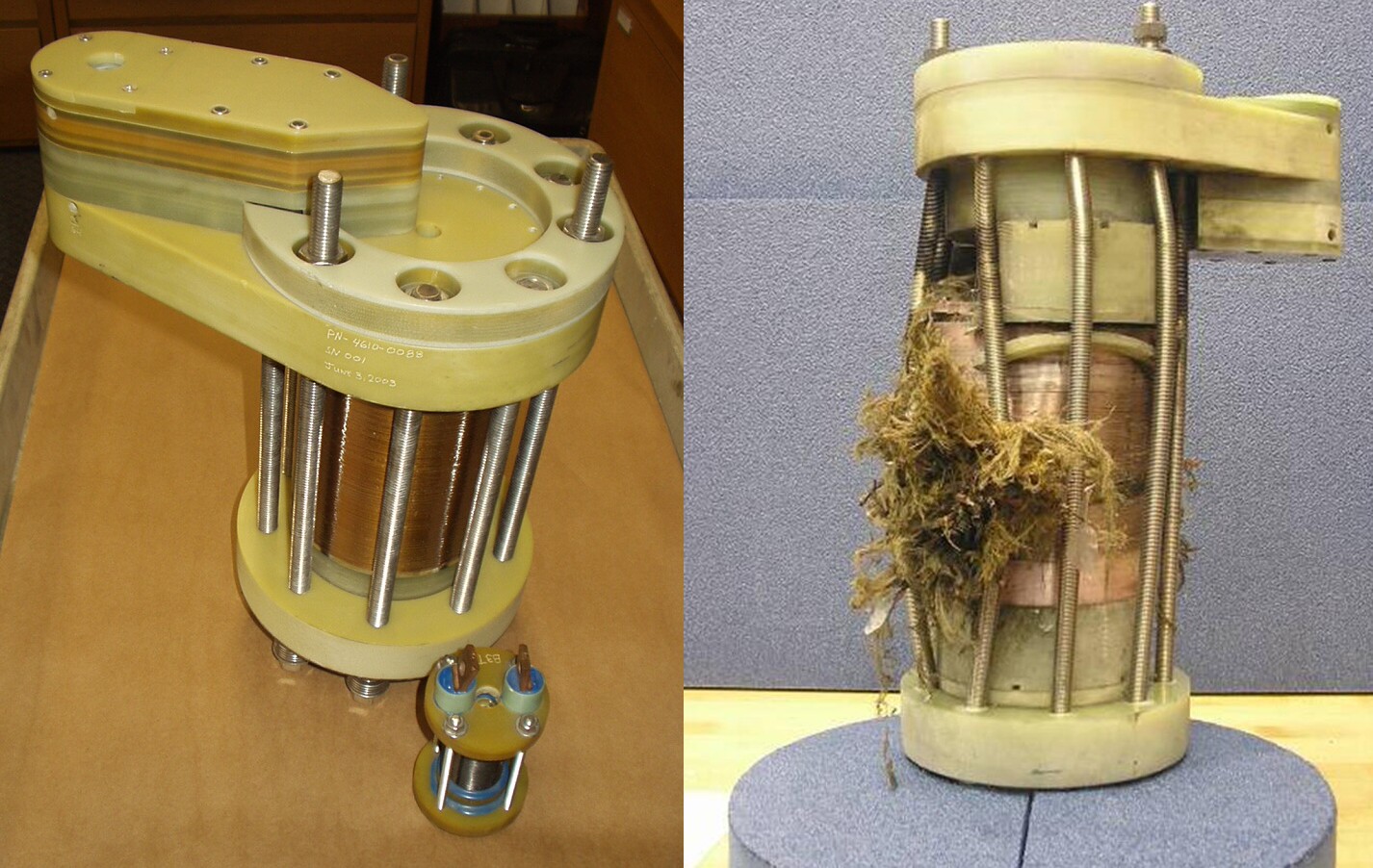Round performance numbers aren't necessarily important milestones, but they do exude an undeniable aura of accomplishment. This was the case when researchers at Los Alamos National Laboratory (LANL) used their largest pulsed magnet to crack the 100 Tesla mark (roughly 2 million times larger than the Earth's magnetic field) by generating a 100.75 Tesla magnetic pulse without damaging the magnet.
Magnetic fields about ten times larger have previously been generated (very briefly) in explosively compressed electromagnets, but the LANL 100 Tesla multi-shot magnet (so named as inspiration for their ultimate goal) delivers a pulse lasting about 15 milliseconds - about 2,000 times longer than its explosively driven brethren.
The LANL Pulsed Field Facility where the LANL 100 Tesla multi-shot magnet is located is part of the National High Magnetic Field Laboratory (NHMFL). The magnet consists of an outer coil set, and a smaller coil inserted into the high field region of the outer coil set. The outer coil set is driven by a 1,200 megawatt motor-generator (in operation, the generator is essentially shorted across the outer coil set), and the smaller inner coil is driven by a 2.6 megajoule capacitor bank. The 9 ton (8,164 kg) magnet coils are immersed in liquid nitrogen to reduce resistive losses and for cooling. Yet the magnet still takes about an hour to cool down following a magnetic pulse.

High field pulsed magnets have two main enemies - heat and pressure - both of which result from the immense current passing through the magnet coils. In particular, the magnetic pressure acting on the wires of the coil is about four gigapascals, a value much larger than the yield strength of the available conductors. The actual stress of the LANL magnet is about 30% of that value, the reduction resulting from a design that distributes the magnetic stress over a larger volume.
The problem of engineering magnets for such strong magnetic fields was sufficiently obscure that an 80 Tesla pulsed magnet was built to allow testing of the inner coil assembly of the 100 Tesla magnet. Views of these this test magnet before use and after 10 pulses is instructive:

Eventually, however, the engineering problems were worked out through a combined program of testing and simulation.
Success in generating the hoped-for field strengths is welcome, of course, but the real prize lays in investigating the physics of matter in magnetic fields which were previously only available for a handful of microseconds. Some measurements simply take longer than that, so a whole new regime of physical phenomena can be studied using this magnet.
Some current problems for which high magnetic fields are well suited as an experimental probe include superconductivity and other magnetically induced phase transitions, Fermi surface studies, quantum phase transitions, magnetotransport, and, of course, the hitherto unexpected physics which we always seem to find when looking under a new rock. The physics, chemistry, and material science communities are eagerly awaiting this new view of material phenomena.
The video below captures the world record attempt. The howl associated with the energization of the magnet is the sound of a 1.2 gigawatt motor-generator nearly being stalled out by suddenly being shorted across the magnet coils.
Sources: LANL, LANL Report LA-UR-01-5259 (PDF), IEEE Transactions on Applied Superconductivity (2008)










